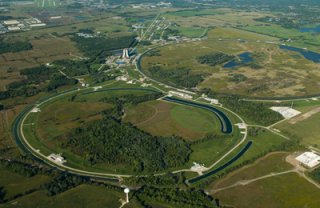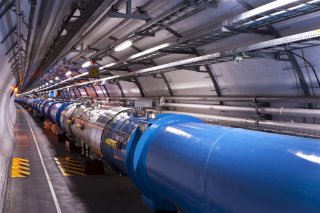Particle Accelerators and Radiation Research
- Particle accelerators produce ionizing radiation, such as x-rays or neutrons while they are operating.
- Particle accelerators can be used to make radioactive materials for use in research, technology and medicine.
A particle accelerator is a special machine that speeds up charged particles and channels them into a beam. When used in research, the beam hits the target and scientists gather information about atoms, molecules, and the laws of physics. In addition to research, accelerators are used for commercial purposes like medicine, manufacturing, and food safety. Learn more about Food Irradiation.
About Particle Accelerators and Radiation Research
Source: Fermilab
Have you ever heard of atom smashers? Certain particle accelerators, called colliders, are special machines that can “smash” atoms into pieces using charged particles like protons or electrons. First, the accelerator uses electricity to “push” the charged particles along a path, making them go faster and faster. The charged particles can go almost as fast as the speed of light. Then, the accelerator uses magnets to steer the particles at top speed into a target. When the fast-moving particles hit the target, the atoms in the target split apart. Scientists study the pieces to learn what makes up an atom and how it is held together.
Particle accelerators also can be used to create radioactive material by shooting charged particles at atoms to change them into different, unstable atoms. The radioactive material produced can be used for research, medicine, or other applications.
Other Particle Accelerator Uses
Source: Oak Ridge National Laboratory
While some particle accelerators are used for research, most are used for other purposes. According to the International Atomic Energy Agency (IAEA), more than 30,000 accelerators are in use around the world. Of these, more than 97% are used for commercial purposes, such as:
- Manufacturing semiconductors, a component of computer chips
- Medical imaging and cancer treatment (Learn more about Radiation Therapy)
- Sterilizing medical equipment and food products (Learn more about Food Irradiation)
- Making plastics and ceramics
- Radioisotope production
Particle accelerators come in a variety of sizes. Medical linear accelerators can fit inside a hospital room. Alternately, the largest particle accelerator in world, the Large Hadron Collider at the European Center for Nuclear Research (CERN) in Switzerland, is more than 16 miles in circumference!
Source: CERN
Particle accelerators are built and operated with safety in mind. Particle accelerators can pose hazards; they emit ionizing radiation while they are operating and can produce radioactive waste. However, regulations and good safety practices ensure that workers and the public are protected when particle accelerators are running.
What You Can Do
- Obey safety instructions. This is especially important if you are near a particle accelerator.



